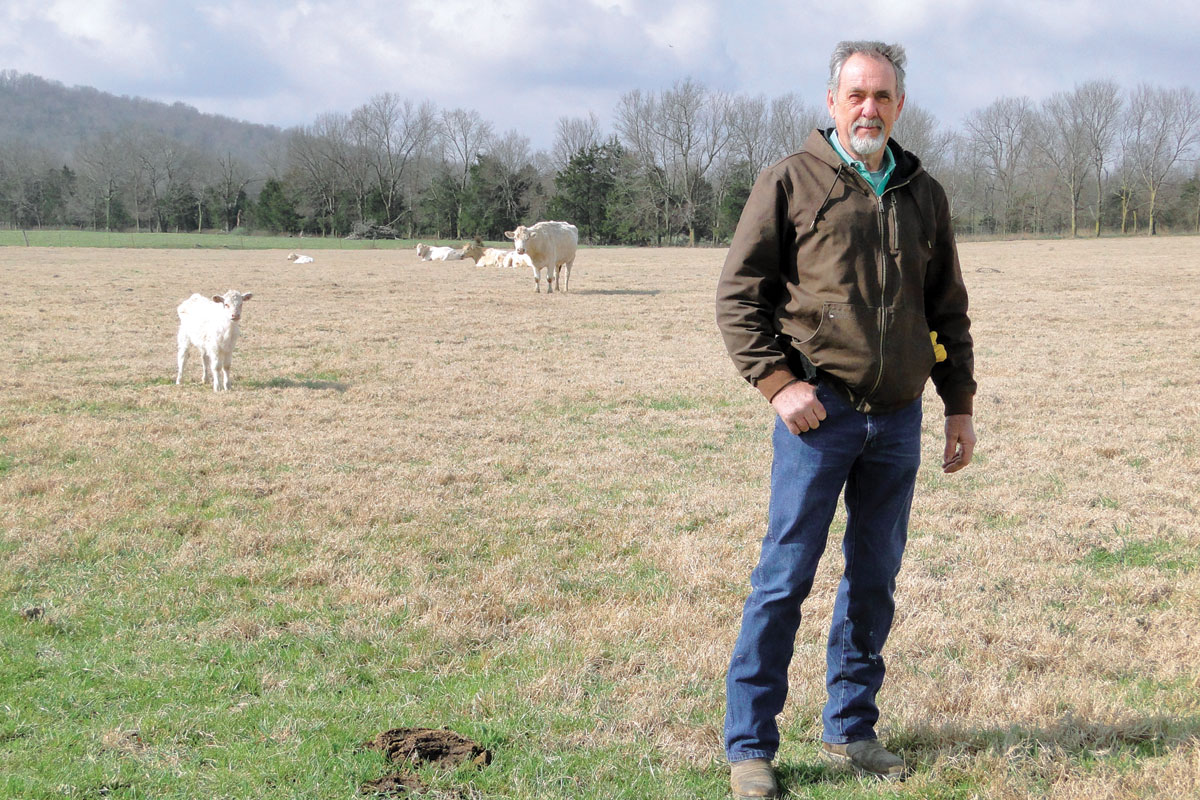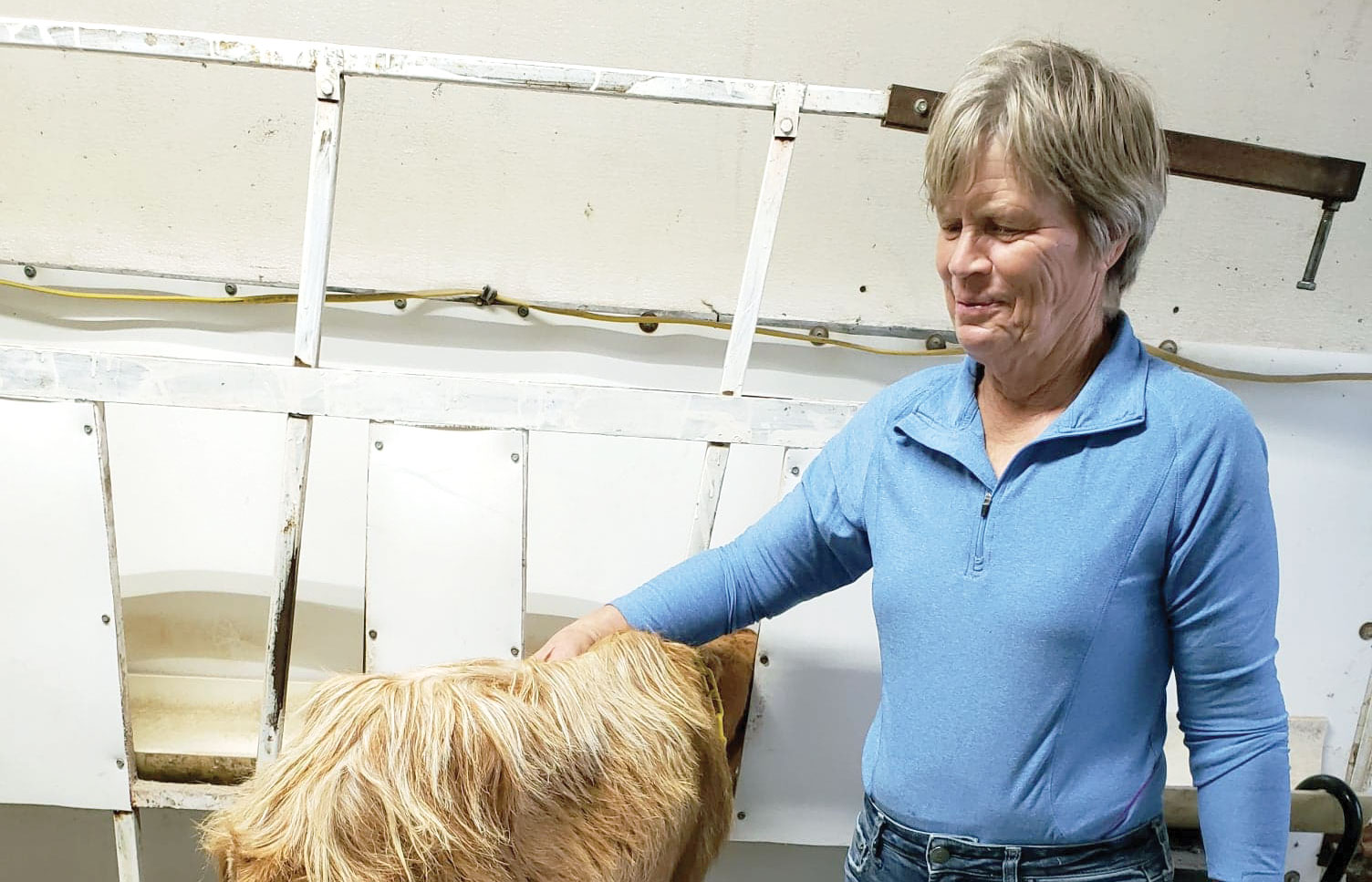
With an off-the-farm business,Johnny Stansell prefers his low-maintenance Charolais-based cattle herd
Johnny and Cherie Stansell’s farm in Hindsville, Ark., was once known as the Madison County “poor farm” with two buildings, a residence for the caretaker and a dormitory for those with nowhere else to go.
A county-erected granite monument on the land reads: “Madison County Poor Farm-This is the location of the 180 acre poor farm, established in 1890 as a home for paupers, orphans and the mildly insane. The caretaker received county funds for each person and was responsible for providing food, shelter clothing and medical care. The need for a poor farm decreased during the 1930s and the Madison County poor farm was sold to the highest bidder in June 1945.”
That bidder was Johnny’s uncle, Lee, who lived there until his death in 1983. Johnny’s father, Cread, purchased the land and later put it into a trust. Johnny is proud of his land’s history in helping others and monument that commemorates that history.
The farm now consists of 320 owned and leased acres. When Cread first became interested in Charolais cattle, Cread and Johnny went to Kansas where they purchased cows and a bull. They began selling bulls as breeding stock to area producers.
Today, Johnny runs the farm by himself and also owns and operates Valley Fertilizer Company. Averaging 70-hour work weeks during fertilizer season makes registering cattle difficult, so he now sells his stock commercially.
“I really like the Charolais breed because of its good disposition and productivity and because the original birthing problems are long gone.”
The herd now consists of 65 Charolais and Charolais-crossed mommas bred by two bulls, one Charolais and one Hereford. The result is the majority of the calves are cream or red, with cream being Johnny’s goal since they sell well. Johnny has both spring and fall calving seasons to spread out the workload over the year. Then calves are sold at weaning at 6 to 8 months or, as Johnny explained, whenever he can get to it. The calves are sold at different sale barns. Johnny believes there are many good sale barns and he likes going to different places and seeing different people.
Culling is not up to the standards that Johnny would prefer because of time constraints. However, he will cull immediately for temperament, and also culls for age, skipping a breeding season, or the momma not providing enough milk to raise a profitable calf. He also follows a vaccine protocol for all stock with preventing pink-eye being a high priority. Further, Johnny prefers a pour on worming program because it is less time-consuming. The cattle are grass and hay fed, as well as provided with free choice minerals. Water is from ponds, a spring fed pond and a weak creek that is not totally reliable. Placing waterers in corrals are part of his future plans.
A strong influence on his farm is from the fertilizer business, which helps account for Johnny’s attention to his land. He has 120 acres of Bermuda for hay with much of the hay being sold to horse owners. Because Bermuda is a warm weather grass, he fertilizes his field between cuttings. For weed control, he boom-sprays and spot sprays because horsemen want quality hay and because ryegrass is a continuing problem. In contrast to the hayfield, his pastures are mostly fescue, a cool weather grass that needs both spring and fall fertilizing.
“To limit the amount of hay you will feed in the winter, producers should fertilize fescue in the fall as well as spring.,” Johnny explained. “My dad always used to say that ‘you can’t starve a dollar out of a cow’ and producers can’t starve a blade of grass out of the ground.’”
Johnny worked for 25 years with Southwestern Bell as a technician. He began with installation and was working with data systems for 911 prior to taking early retirement at 50 because his dad was ill, and he wanted to spend more time with him and help on the farm. Johnny later became restless, missed being with people and wanted a new challenge, so, in 2001, he bought the fertilizer business which he initially thought of as a spring and summer proposition.
“Boy was I wrong,” Johnny said, “It’s year-round and intensive but I still love how I spend my days. I enjoy working with fellow farmers and meeting new people, I just wish I had more time for my cattle.”
Johnny has numerous buggies and two large-capacity spreader trucks for fertilizer he custom blends according to specific requests, usually based on NRCS soil testing. The soil testing determines the proportion of each of the components: manufactured urea for nitrogen, manufactured granulated phosphorus for the root structures and mined potash, which is also for the root systems.
“I really enjoy both of the things that I do, but just wish there were more hours in a day,” Johnny said.






